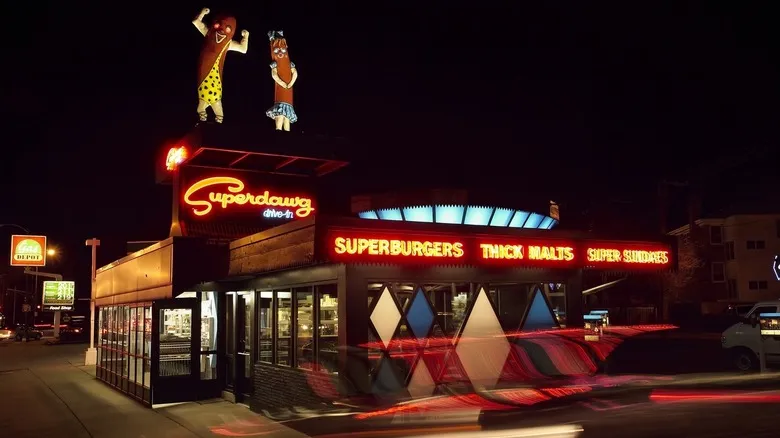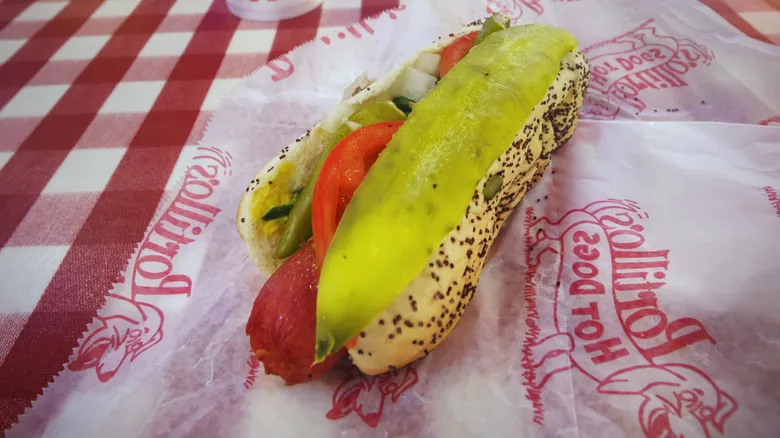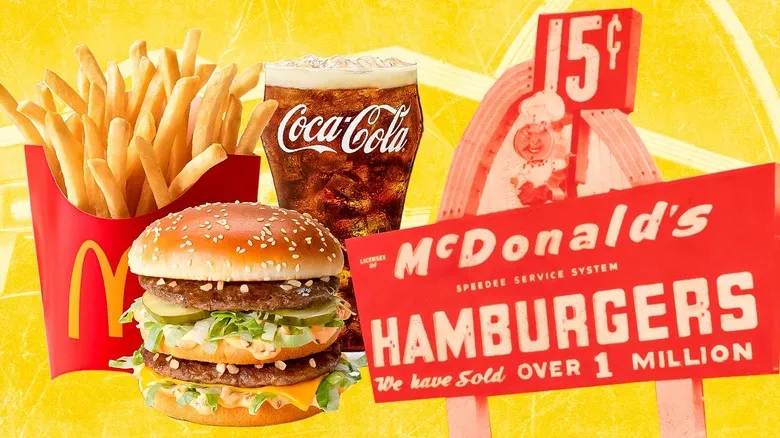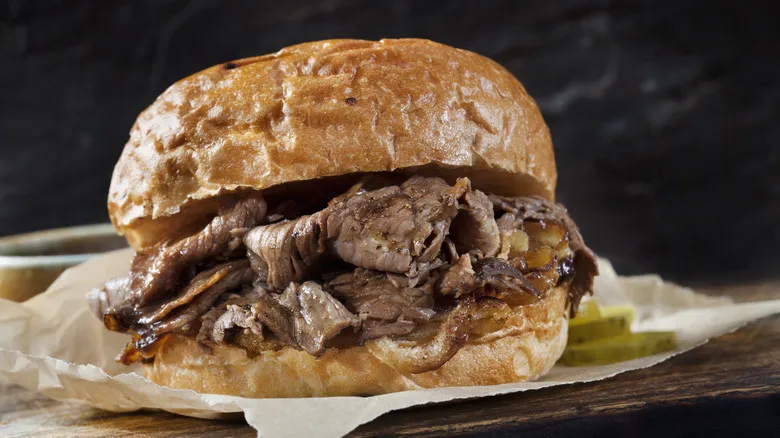The Chicago-style hot dog's salad days

Rich in history and flavor, a Chicago-style hot dog is generously topped with vegetables, often humorously described as having been "dragged through the garden." After years of careful preparation, there are specific guidelines for making a proper Chicago dog. The bun must always be steamed—forget about toasting—and while the sausage can be boiled or steamed, grilling is a definite no-no. (Some Chicago restaurateurs have deviated from tradition by offering slightly charred versions known as "char dogs.")
Although the Chicago dog gained popularity during the Great Depression, its appeal continued long after the economy rebounded. Much of its enduring success can be attributed to the post-war boom in America. Many veterans returning from World War II settled in the suburbs and found that operating hot dog carts was a viable way to earn a living. Since then, the dish's popularity has only increased. In fact, this regional favorite has become so well-loved that restaurants nationwide now serve some of the finest Chicago-style hot dogs available.
The tale of the Chicago-style hot dog is deeply embedded in the Windy City. Many of its most beloved hot dog establishments, like Superdawg, began as food carts. No matter where you are in Chicago, the history that has shaped this iconic hot dog is always close at hand.
The Chicago-style hot dog today

With a rich history, the Chicago-style hot dog continues to flourish. While the unique taste of a Chicago dog has remained unchanged, some aspects of the city's culinary scene have evolved. For instance, the immigrant population in America has increased, bringing diverse culinary traditions with them. As a result, some Chicago dog establishments now feature dishes from various global cuisines.
Take Al's Drive-In, a well-known hot dog stand located just outside Chicago, which serves not only hot dogs but also Chinese cuisine. At this family-run eatery, you can savor a double hot dog made with a classic Vienna all-beef hot dog alongside chicken chop suey. This fusion of cultures serves as a fantastic catalyst for the creation of innovative and exciting dishes.
A contemporary interpretation of the Chicago dog is also evident as celebrity chefs showcase their preferred methods of preparation. Chef Matty Matheson, for instance, enthusiastically highlights the Chicago dog in his Facebook cooking tutorial, stating, "We love a city that loves hot dogs."
One constant throughout the history of the Chicago dog is the pride it instills in Chicagoans. The Chicago dog has become a symbol deeply connected to the city, celebrated through souvenirs and even tattoos. The affection Chicagoans have for their hot dog is intricately woven into the city's identity. In short: it's here to stay.
Recommended

In The 1950s You Could Buy McDonald's Entire Menu For Under $2

The Extravagant Details Behind Prince Harry And Meghan Markle's Wedding Cake

How The Sandwich Gained And Lost Its Scandalous Reputation

Here's How Ancient Romans Seasoned The World's First Hamburgers
Next up

